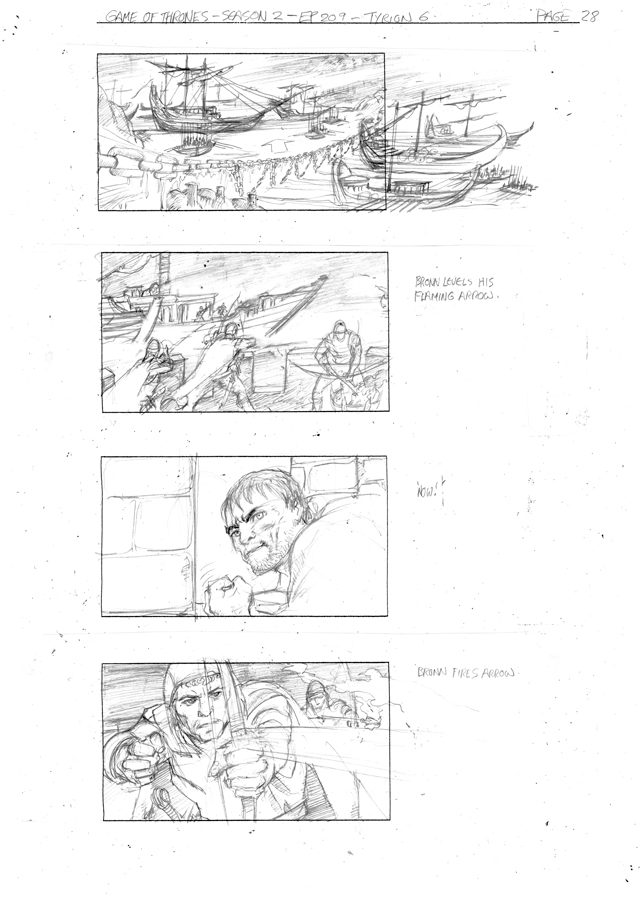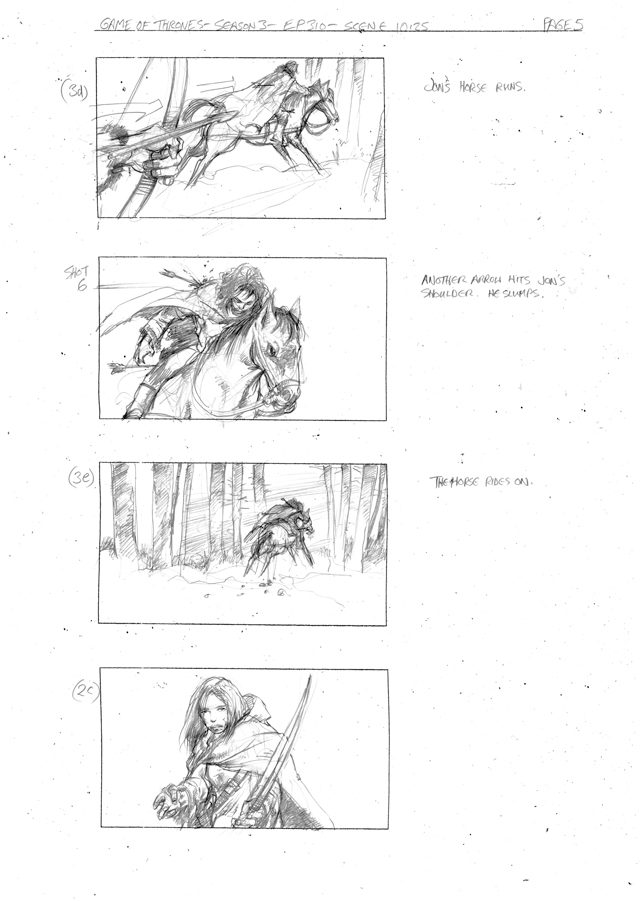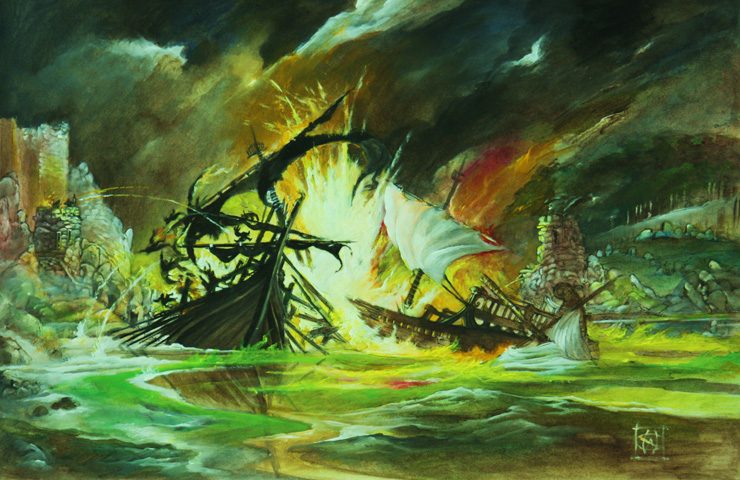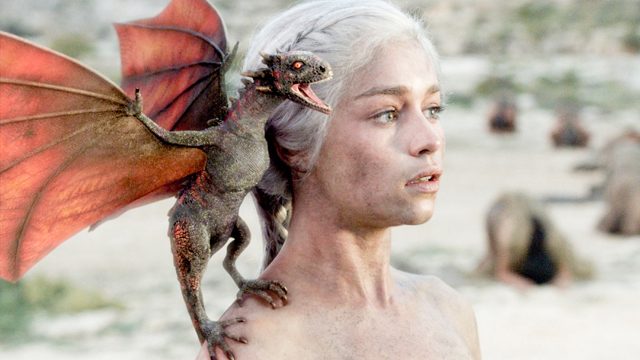SUMMARY
This is AI generated summarization, which may have errors. For context, always refer to the full article.

MANILA, Philippines – By television standards, Game of Thrones is one massive production. There’s the far-off locations (imagine filming in the middle of Iceland or Morocco, for months), entire warehouses for costumes and props, and the thousand-strong crew of cinematographers, production specialists, and visual effects artists, not to mention the actors themeselves.
But like every show or film, the magic begins with the storyboard – a series of comics-like sketches that contain the director’s vision for shots and camera angles. For Game of Thrones’ entire 4-season run, only one person has been responsible for these boards – Will Simpson.
But when Simpson draws a storyboard for Game of Thrones, he creates much more than a scene mock-up. He is, after all, an internationally renowned comic book artist who has worked on serials such as such as Batman, Transformers, Aliens, and Hellblazer. His storyboard career, which started “by accident,” spans films such as Reign of Fire (Christian Bale) and Byzantium (Gemma Arterton).
Simpson first joined the Thrones crew when he was asked to make concept art for the weapons. When Simpson picks up a pencil, he treats each frame as if they were individual pieces of artwork. Perhaps this attention to detail is the reason why, 4 seasons later, HBO continues to seek his help in bringing the cult series to life.
Season 5 won’t be out until next year. In the meantime, fans have been treated to Will Simpson’s Comic Con tour, where his actual GOT storyboards and concept art are on display.
In an interview with Rappler, Dekit.com, and Total Film Indonesia, Simpson talked about his creative process, what he feels when he sees his concepts on screen, and what it’s like to draw the White Walkers.
Tell us about your concept art for GOT. Where did you get inspiration for the characters such as the White Walkers, aside from the novel’s descriptions?

“The very first work that I got hired to do in Game of Thrones was to develop the weapons design, and we would be developing the weapons based on George’s script, books, and descriptions.
We would be looking into medieval weaponry and design, from all over the world, we would’ve been taking elements from the different areas related to the areas where our characters would come from within the books.
I would find looking at reality and looking at the ancient world was such an inspiration to the work that I was doing. The White Walkers – it was an idea that was basically based on all the horror films you’ve ever seen.
When it’s described in the book, it’s more about the ethereal sense of what the thing is rather than actually seeing it in front of you. So when you have to conceptualize that, then it becomes where, “I don’t want this to look stupid, I want this to look like it’s a real kind of fear element in the story.” And it was as much about conjuring the atmosphere of these creatures as well as the design elements and describing George’s description of the characters.
It was one of those things where, the least we show of these characters, the better we have to create an identity. In a painting, you look at it and it’s a still image and you can see what the thing looks like, but on screen, you only want to see it for a moment, because it’s much more effective when you do that.”
Which is more challenging – boards or comics?
“The comic work is all about the finished piece of artwork. It fulfills the storytelling but also lives on as a separate entity. When you’re doing a storyboard, it’s a very different set of criteria that you’re trying to fulfill. If you bring any of the artistry into the storyboard work, that’s basically your own personal set of values that you want to impose upon the work.
[A storyboard] has to be clear, it has to logically fulfill what the story is meant to be about, it has to fulfill all the camera shots and the angles that are asked for. It’s interpreting the director’s mind onto paper.
In my mind, they’re like unfinished artwork, because it’s like my pencils that I would do for a comic strip. But I’m still very detailed about my storyboard work. For me, I want it to live there, I want the clarity to be there, and I want everybody to understand the atmosphere of the story that we’re trying to tell.”

How do you start work on a storyboard?
“You’re working with directors all the time. So when you’re working with a director, you know that it’s more about getting their interpretation onscreen than it is about anything that you’d be interested in. But then sometimes, of course, one has that opportunity where you get to do a scene by yourself, because one of our directors doesn’t have time, and we need to proceed with something. Luckily, they’ve been able to use it.
I tend to be very detailed about my storyboards I think. The guys seem to really like what I’ve done, and they keep re-hiring me, which is fantastic.
The thing is, I feel that I want to give value to what I’m doing, I want to make sure that I’m doing my best for everybody that’s gonna look at these boards, to get a sense of what it is that we’re trying to prepare. I think that’s all left over from my comic strip days.”
What is it like seeing your work on set and on the screen?

“If you walked onto the set where Dany’s on the boat and the dragon’s flying past, there’s no dragon, she’s talking to empty air.
I actually love some sets that I get to see that probably I haven’t drawn, things that are conversations between people. I was over on set for that amazing sequence when Tyrion turns on to tell Shae that she has to leave him… you’re getting is the emotion of the scene and you’re seeing the elements of love that he has for the character. To me, it’s the bits that I’m seeing the reality of what our actors do. That’s fantastic.
Then when I see my scenes on screen, it’s funny because so much of it is going through your head and you can remember “oh I drew that, that’s cool” and you see all that being portrayed and that does bring a smile to your face at home.
I love seeing the elements that I worked on in a film – it kind of makes you feel that your work is actually useful. I’m a very happy man because there’s a lot of excellent stuff on screen that I know I’ve got a big thumbprint on.” – Rappler.com
Catch HBO Signature’s Game of Thrones Season 4 marathon this July. Episodes 1-5 air on July 12, and episodes 6-10 air on July 13 from 12noon onwards. Marathon schedules for August and September will be announced at a later date.
Add a comment
How does this make you feel?
There are no comments yet. Add your comment to start the conversation.